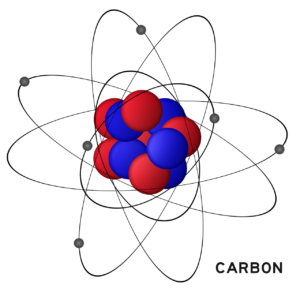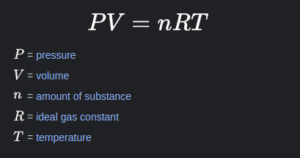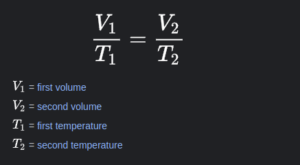Avogadro’s Law | Definition, Application, Formula, & Facts
In the realm of chemistry, few principles are as fundamental and far-reaching as Avogadro’s Law. Named after the Italian scientist Amedeo Avogadro, this law provides critical insights into the behaviour of gases and plays a pivotal role in understanding the fundamental nature of matter. In this comprehensive exploration, we delve into the definition, applications, formula, and intriguing facts surrounding Avogadro’s Law, unrevealing the mysteries that underpin this cornerstone of chemical science.
Definition of Avogadro’s Law
Avogadro’s Law, formulated by Amedeo Avogadro in the early 19th century, is a fundamental principle in chemistry that describes the relationship between the volume of a gas and the amount of substance present, under constant temperature and pressure. The law asserts that equal volumes of gases, at the same temperature and pressure, contain an equal number of molecules. In simpler terms, it implies that the amount of gas is directly proportional to its volume.
Expressed mathematically, Avogadro’s Law can be written as:3
V ∝ n
where V is the volume of the gas, and n is the amount of substance measured in moles.
It’s important to note that Avogadro’s Law is only applicable to gases and not to liquids or solids. In the gaseous state, particles are widely spaced and exhibit high mobility, allowing them to fill the container they occupy.
Applications of Avogadro’s Law
- Molar Volume of Gases: One of the most significant applications of Avogadro’s Law is in determining the molar volume of gases. Avogadro’s insight allows scientists to establish that one mole of any gas, at standard temperature and pressure (STP), occupies the same volume—approximately 22.4 litres. This constant is known as the molar volume.
- Gas Stoichiometry: Avogadro’s Law is crucial in gas stoichiometry, a branch of chemistry that deals with the calculation of reactants and products in chemical reactions involving gases. By understanding the relationship between volume and moles, scientists can predict the quantities of gases consumed or produced during chemical reactions.
- Ideal Gas Law: Avogadro’s Law contributes to the development of the Ideal Gas Law, which integrates Boyle’s Law, Charles’s Law, and Avogadro’s Law into a unified equation. The Ideal Gas Law is expressed as PV=nRT, where P is pressure, V is volume, n is the number of moles, R is the ideal gas constant, and T is temperature. Avogadro’s Law plays a critical role in understanding the behavior of gases in this equation.
- Gas Density: Avogadro’s Law is utilised to calculate the density of gases. By knowing the molar volume at STP, scientists can determine the mass of one mole of a gas and, consequently, its density under specific conditions.
- Comparative Studies: Avogadro’s Law facilitates comparative studies of different gases. By examining equal volumes of various gases at the same temperature and pressure, scientists can compare the number of molecules and gain insights into their molecular weights and structures.
The Formula Behind Avogadro’s Law
While Avogadro’s Law is often expressed in the simple form V∝n, it can be further elaborated using the ideal gas law. The ideal gas law states that the product of pressure (P), volume (V), and temperature (T) for a given amount of gas (n) is constant. Mathematically, this relationship can be represented as:
PV = nRT
Where:
- P is the pressure of the gas.
- V is the volume of the gas.
- n is the number of moles of the gas.
- R is the ideal gas constant.
- T is the temperature of the gas (measured in Kelvin).
Rearranging the ideal gas law to solve for volume (V), we get:
This equation highlights the direct proportionality between the volume of a gas and the number of moles present, provided that the temperature and pressure remain constant.
Facts about Avogadro’s Law
- Avogadro’s Number: Avogadro’s Law is intimately connected with Avogadro’s number, which is the number of atoms, ions, or molecules in one mole of a substance. This number, approximately 6.022×1023, is a fundamental constant in chemistry and is named in honour of Amedeo Avogadro.
- Constant Temperature and Pressure: Avogadro’s Law specifically applies when the temperature and pressure are held constant. Any variation in these conditions may lead to deviations from the expected behaviour.
- Equal Volumes, Equal Number of Particles: The essence of Avogadro’s Law is encapsulated in the statement that equal volumes of gases, under the same conditions, contain an equal number of particles. This principle laid the groundwork for the concept of the mole as a counting unit in chemistry.
- Applicability to All Gases: Avogadro’s Law is universal and applies to all gases, regardless of their chemical composition. This universality is a testament to the elegance and generality of the law.
- Limitations: While Avogadro’s Law is highly useful, it is important to recognise its limitations. The law assumes ideal behaviour, which implies that gases do not interact with each other, and their volumes are negligible compared to the container size. Real gases deviate from ideal behaviour under certain conditions, and corrections may be necessary.
- Contributions to Atomic Theory: Avogadro’s Law played a crucial role in the development of atomic theory. By establishing a relationship between volume and the number of particles, it provided evidence for the existence of discrete, indivisible particles, supporting the atomic model of matter.
- Experimental Verification: The experimental verification of Avogadro’s Law involved meticulous measurements and advancements in experimental techniques. The precision achieved in later experiments solidified the acceptance of Avogadro’s insights into the nature of gases.
- Historical Context: Avogadro’s Law was proposed by Amedeo Avogadro in 1811, but its significance was not fully recognised until later in the 19th century. The understanding of the molecular nature of gases took time to develop, and Avogadro’s contributions became more apparent as the field of chemistry advanced.
Conclusion
In conclusion, Avogadro’s Law stands as a foundational principle in the study of gases, providing a key link between the macroscopic world of volumes and the microscopic realm of molecules. Its applications are diverse, ranging from the determination of molar volumes to its role in gas stoichiometry and the development of the Ideal Gas Law. The formula, derived from the ideal gas law, succinctly expresses the proportional relationship between the volume of a gas and the number of moles present.
The facts surrounding Avogadro’s Law illuminate its significance in the context of Avogadro’s number, the universal applicability to all gases, and its contributions to atomic theory. As with any scientific law, it is crucial to acknowledge its limitations and the conditions under which it holds true.
Avogadro’s Law, born in the early 19th century, has withstood the test of time and experimentation, remaining a cornerstone in the edifice of chemical understanding. Its elegant simplicity and broad implications continue to inspire curiosity and drive advancements in the study of matter and its behaviour.





